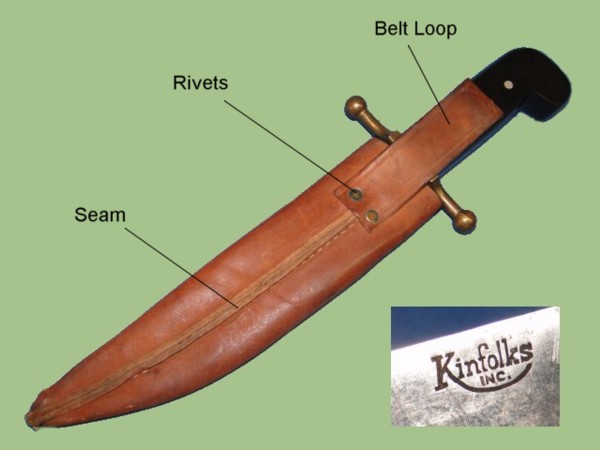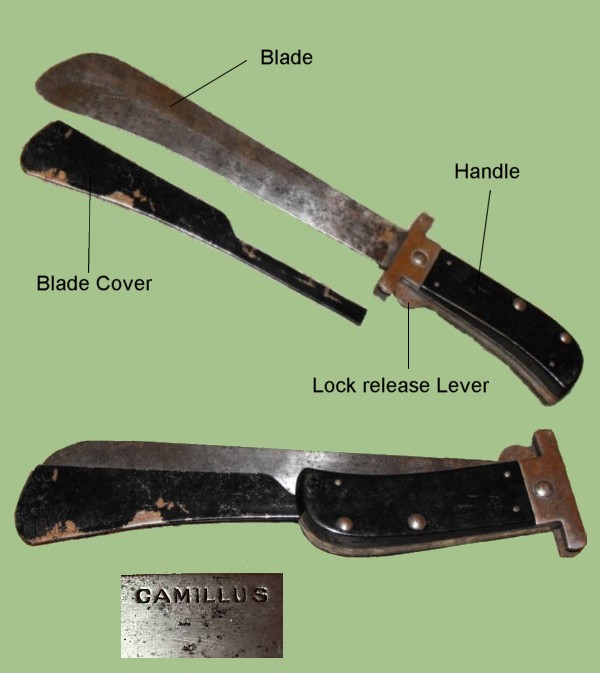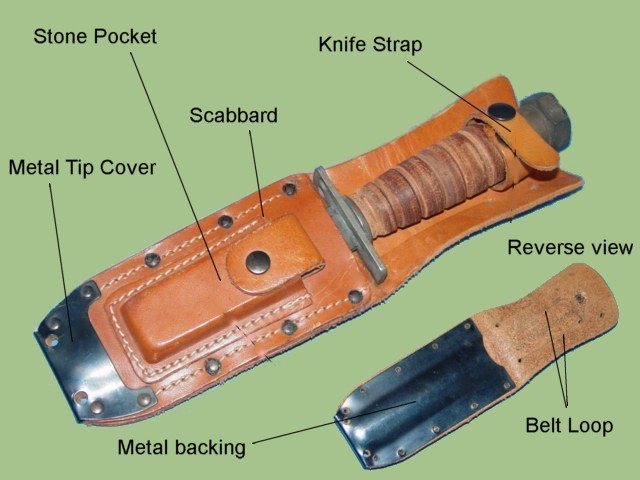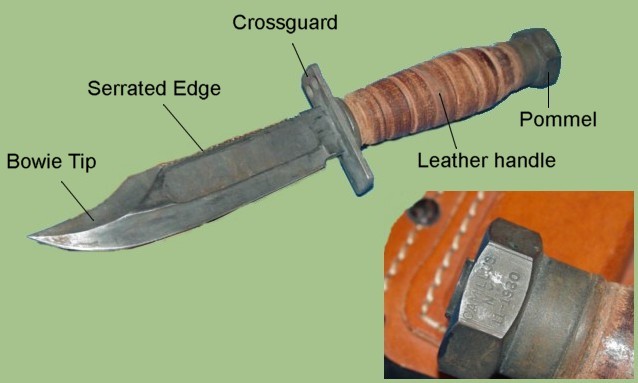THE HISTORY OF THE MILITARY SURVIVAL KNIFE
Knives have been a key fighting weapon in every war. No matter how advanced the technology, a good knife always has a place in battle.
A special breed of knives saw extensive development during WWII. Known as the "fighting knife". While it could be employed for the uses of a regular knife, its primary goal was for hand-to-hand combat. The design, balance and materials employed varied from the run of the mill knife.
This page provides a sample of the various fighting knives used during WWI and beyond. The samples displayed here cover various countries that participated in the war. Information provided includes the identification of fighting knives and pricing of fighting knives.
THE V-44 SURVIVAL KNIFE
The V-44 survival knife was issued to US Army Air Force personnel in case that they were shot down and needed to
survive in the jungles of the South Pacific. The knife was first ordered in 1934. It was considered to be a
machete. The knife featured here was manufactured by the Kinfolks company.
The design of the knife was very imposing. It consisted of a black horn handle secured to the tang via the use
of three brass rivets.

The crossguard consists of two equal length arms that extend to the left and right and are terminated with
circular ends. The blade is of single edge construction. The tip is of bolo type. Two horizontal lines
extend for almost half of the length of the body. The manufacturer's logo is found near the base on the
spine of the blade.
The scabbard is made of brown leather. A seam is placed in the back section. A separate piece of leather is
riveted to the back to form the belt loop.

WWII US AAF SURVIVAL MACHETE
This is a US Army Air Force folding machete. As issued during WW2. The machete was part of the B-4 emergency
bailout kit. The kit came in a square canvis container which also included other survival items such as a
fishing kit, signal mirror, etc. The kit was normally attached to the parachute harness.
The folding machete consisted of a black horn handle which was secured by a series of different size rivets.
A locking mechanism is found in the handle. Pressing the lever allowed for the machete blade to be folded or
unfolded. The blade is of single edge construction. it measures approximately 10 inches in length.
length of the machete when folded is approximately 11 inches. Even when folded the blade extended beyond the
protection of the handle. To avoid any cuts or injuries to the user a metal blade cover was also issued with the
machete. The cover fits the blade snuggly. The problem with the blade cover is that it was a loose piece that
could easily be misplaced.

Machetes are very useful for clearing brush, building shelters and other survival activities.
The WW2 US AAF folding machete was manufactured by Camillus, case and hte cattaraugus company. The manufacturer's
logo was found on the side of the blade. an example of such marking is provided in the above photo.
US AIR FORCE PILOT SURVIVAL KNIFE
This is a US Air Force pilot survival knife. These type of knives began to be issued during the Vietnam war. It was
determined that pilots needed a blade that could help them survived in case they were shot down. The space in the
modern jet fighters was very limited. The knife had to be small but sturdy.
Pilots were issued a survival vest. The knife was attached to the vest.
The scabbard is made of brown leather. The tip is re-enforced with a metal lip that is riveted in multiple places.
The front has a small pouch with a flap that has a snap. This is where the flint/sharpening stone is placed. The
scabbard is very heavy duty. It has multipe rivets and stiching on the sides. The top section has a couple of
slits to allow the belt to pass through. The back of the main body of the scabbard is covered with a metal plate.

The design of the knife consists of a brown leather handle. Several indentations are carved into the handle in order
to provide better gripping. The pommel has a hexagonal shape. One side normally has the date of construction and
the manufacturer's name. Sometimes the date is not present. The pommel could be employed as a hammer.
The crossguard is of rectangular shape. One side has two small holes. The blade is of single edge construction.
The spine is serraed. This feature is particularly useful for cutting branches and similar things. Great for
building traps or shelters.
The tip is Bowie type with it pointing slightly up.

If you have an interest is seeing other fighting knives, you can do so by going to our
Military Fighting Knives Price Guide
identification page. Where we cover Army, Navy, Army Air Force, USMC and other military groups.
While the knives shown on this page are not for sale, you can visit our website,
MilitaryItems.com ,
to see other military and non-military knives available for sale.
|







